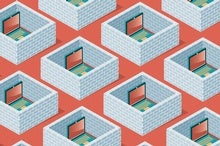 |
| August 22, 2023 |
How do impulses in the mind become actions in the body? One way to decode the link between brain cells and behavior is to study them in simple organisms like the roundworm. Now researchers have used machine learning to develop a detailed brain "atlas," mapping specific nematode neurons to the worm's actions and reactions. It's one of the most in-depth catalogs of these links ever compiled. Read more in this week's top story! |
| | Sophie Bushwick, Associate Editor, Technology
| |
 |
| |
| |
| |
| |
| |
| |
| Artificial Intelligence Safeguarding AI Is Up to Everyone The use of artificial intelligence is so varied and industry-specific, no one federal agency can manage it alone | | | | |
| |
| Artificial Intelligence How AI Knows Things No One Told It Researchers are still struggling to understand how AI models trained to parrot Internet text can perform advanced tasks such as running code, playing games and trying to break up a marriage | | | | |
| |
| QUOTE OF THE DAY
 "While there have been no major U.S. plane crashes in more than a decade, potentially dangerous incidents are occurring far more frequently than almost anyone realizes--a sign of what many insiders describe as a safety net under mounting stress." Sydney Ember and Emily Steel, The New York Times | |
FROM THE ARCHIVE
 | | | |
LATEST ISSUES
 |
| |
| Questions? Comments?  | |
| Download the Scientific American App |
| |
| |





















